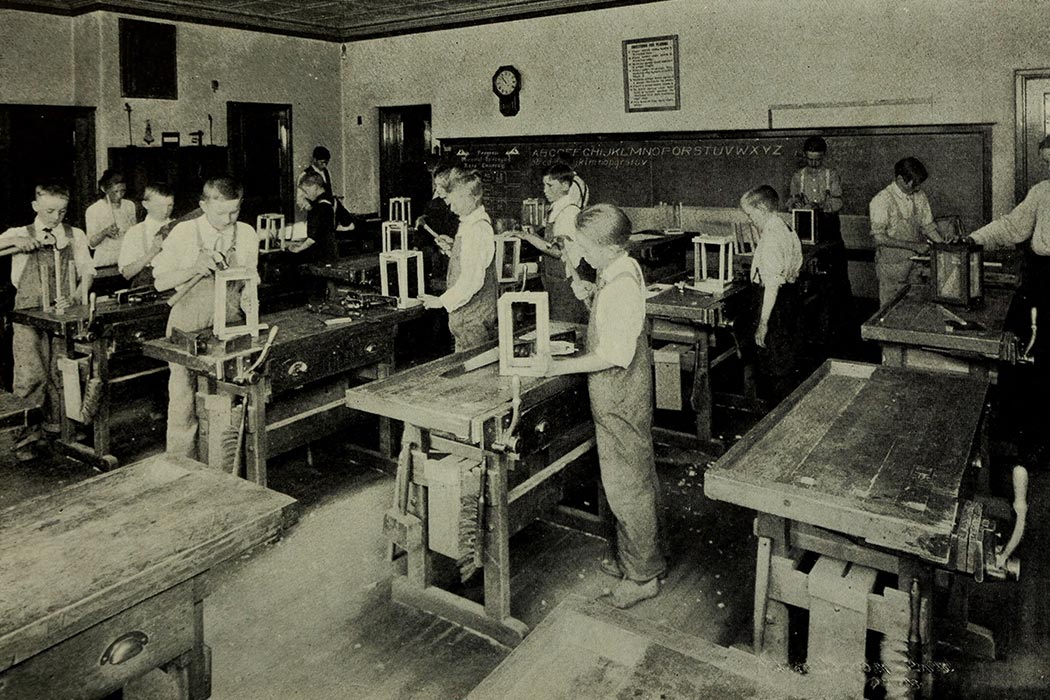Modern schools serving disadvantaged students often come under fire for encouraging hyper-regimented teaching styles instead of stoking students’ curiosity. The divergence in teaching methods for kids of different socioeconomic backgrounds is nothing new. In a paper for The Journal of Education, William B. Thomas and Kevin J. Moran investigated what lessons were like in schools serving various social classes in the early twentieth century.
Thomas and Moran analyzed 389 articles written for a professional journal by teachers in Irish-dominated South Buffalo, New York. They categorized the articles based on the social status of the neighborhood where the teachers’ schools were located and looked at the types of lessons the teachers’ described.
Of the papers written by teachers in higher-status schools, Thomas and Moran found that 68 percent focused only on academic instruction, while 23 percent explained how they used academic instruction to help build students’ character, and just 9 percent focused only on character education with no academic content. In the articles written by teachers in the lowest-status schools, the focus was much more on character, with a breakdown of 44 percent purely academic, 32 percent about character lessons via academic content, and 30 percent on character training alone. Middle-status schools fell between the two extremes.
Along with the difference in how much they concentrated on character education, the schools differed in what sort of character-building they were concerned with. The character-focused articles by teachers at the highest-status school were nearly as likely to be concerned with “intrinsic” traits like charity, sympathy, love of aesthetic, and perseverance, as “extrinsic” ones like obedience, self-control, and punctuality (46 percent versus 54 percent). In contrast, 97 percent of the “character” articles by teachers from the lower-status schools were about the extrinsic traits.
The teachers from high-status schools described having students exchange letters with kids in other countries, create a thrift club and deposit their savings in a local bank, and study despotism in history class as a warning against blind obedience to authority. In contrast, teachers from the lower-status schools wrote about using a system of gold and silver stars to encourage students to be on time, emphasizing cleanliness and good hygiene, and teaching kids to “respect the rights of others.”
Thomas and Moran write that the teachers from different schools talked a similar language, but words might be something very different from one place to another. In high-status schools, “citizenship” might mean the ability to participate in a democracy, taught through tools like student government. In low-status ones, it often meant being deferential, quiet, and compliant.







